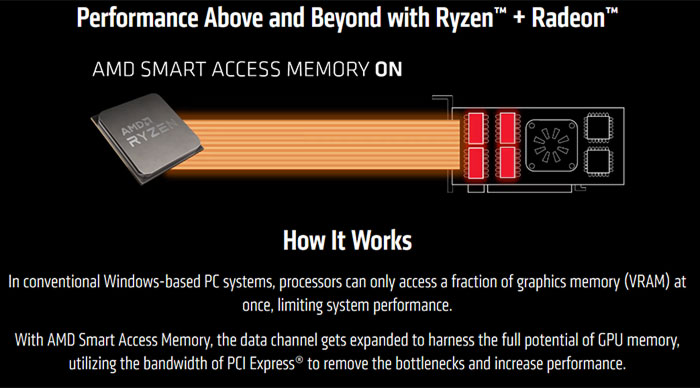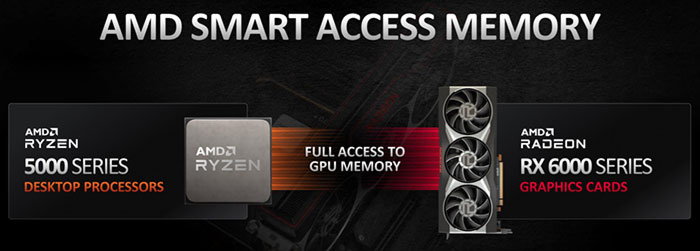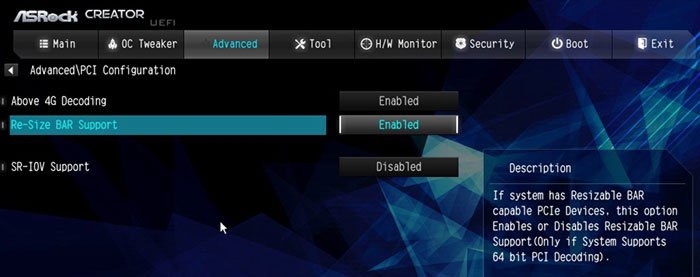Alongside the official announcement of the Radeon RX 6000 Series graphics cards we heard about a number of technologies that AMD would be implementing to enhance the operation of its new RDNA 2 GPU architecture. In addition to the refined process, core architecture improvements, Infinity Cache, and easy overclocking modes like Rage Mode, it was indicated that users with both AMD RDNA 2 GPUs and AMD Zen 3 CPUs would be able to make use of Smart Access Memory (SAM) to gain a further performance boost of approx 10 per cent or greater.

Somewhat controversially AMD shared just one graph of indicative Radeon RX 6900 XT gaming benchmarks (pitted in 4K against the Nvidia GeForce RTX 3090) and it noted the Radeon machines had both Rage Mode and SAM turned on. AMD explains the benefits of SAM come from broadening the CPU and GPU data transfer bus aperture beyond 256MB.

According to information Gamers Nexus has garnered from an unnamed Nvidia exec, the green team already has similar tech to SAM working in its labs. "The capability for resizable BAR is part of the PCI Express spec," Gamers Nexus quoted the Nvidia representative of explaining, via Twitter, a few hours ago. The Nvidia source went on to say that the similar functionality will be unlocked on Ampere GPUs in an upcoming software update and that the gains AMD boasted of in its SAM implementation were approximately the same scale that Nvidia had seen in its own hardware tests.

So, it is interesting to see the show on the other foot, with Nvidia in effect busting AMD 'proprietary' tech. Moreover, Nvidia says that its Ampere SAM-a-like implementation doesn't require a partner AMD CPU with 500 series motherboard (Intel is OK too), and it says that PCIe Gen 4.0 isn't even required.

We have yet to share AMD Radeon RX 6000 series graphics card tests and benchmarks, as the release date for the first two examples (the Radeon RX 6800 and 6800 XT) is Wednesday, 18th November, next week. It will be interesting to see the impact of SAM in third party tests, and how long we have to wait until Nvidia's facsimile tech arrives.
In earlier related news, AMD is developing an open, cross platform alternative to Nvidia's AI-powered DLSS efficient rendering technology.













